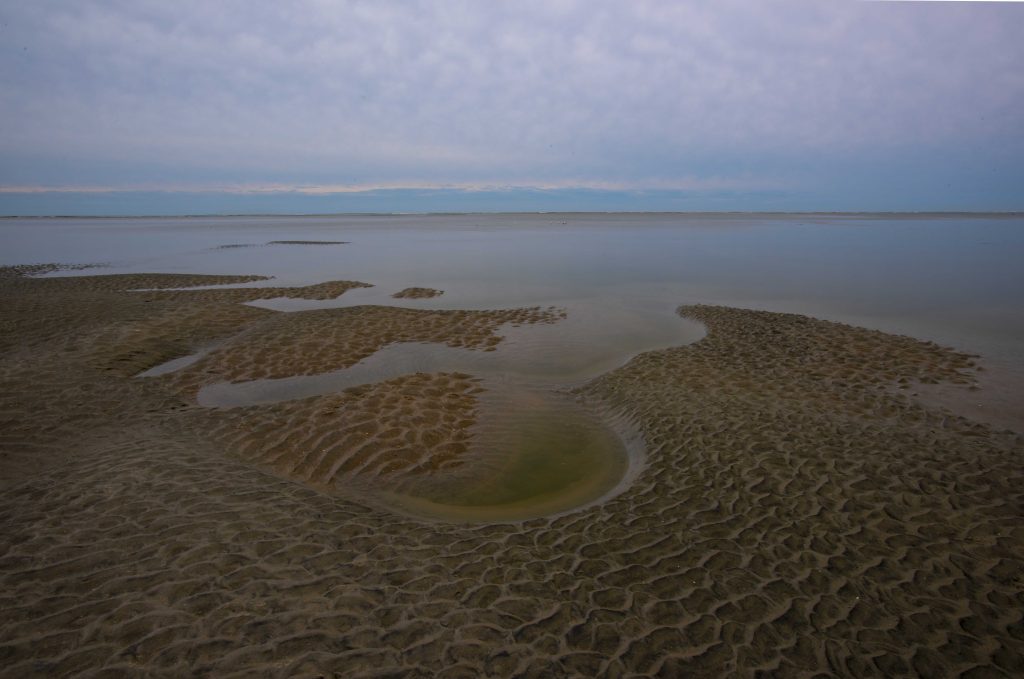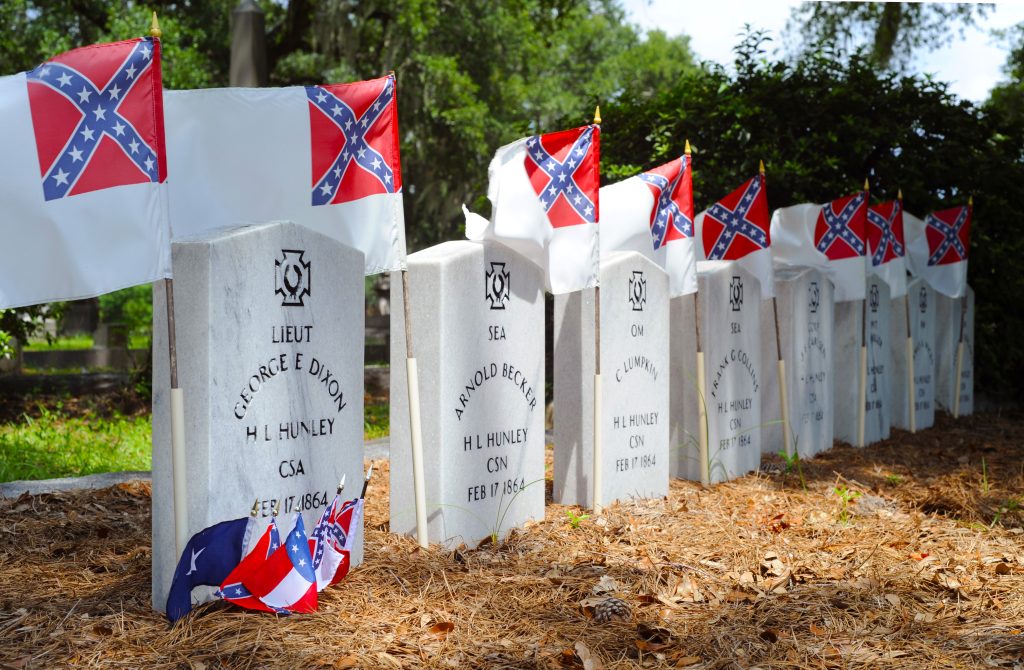In the Waves – The Mystery of the H. L. Hunley

More mystery than history surrounds the intriguing sinking of the H.L. Hunley – the Confederate submarine which rammed a super charged torpedo perched on a 16-foot extended spar that was driven into the USS Housatonic. The mighty ship sank in a mere matter of moments. Soon after the fateful encounter between the world’s most famous submarine and the frigate ship that was patrolling the waters of Charleston, South Carolina, as part of the Union’s plan to starve southern cities of supplies, questions began to swirl about the fate of the submerged vessel nobody ever saw again after the great explosion.
By February 1864, Charleston was penned in by the Union navy unable to break the blockade stranglehold which included dozens of ships patrolling the waters off the Charleston Harbor, Sullivan’s Island and the Isle of Palms north of the city.
Desperate to wreak terror into the Union fleet, the Hunley’s crew of eight volunteers hand cranked the Hunley – a crudely designed, thinly ironed submersible – through the Breach Inlet at the north end of Sullivan’s Island on a calm, cold February 17, 1864. A nearly full moon illuminated the calm ocean waters, which rarely occur along the southeastern coast in mid-winter given the prevalence of frontal weather systems, the weather and ocean conditions were perfect for the first naval warfare between a submarine and a surface war-ship. Calm conditions were essential for the sub to navigate, and steer itself to an enemy target.
Just after 8:45 pm, at a speed of two knots, the Hunley rammed 200 pounds of black gunpowder into the unsuspecting ship. The torpedo, ensconced in a copper barrel rigged with a pressure push trigger, detonated on impact with the explosion hurling the massive Housatonic off the water in a blast that killed five crewman and dumped some 140 others into the 44-degree saltwater.
The mystery, however, of what precisely sunk the Hunley has been raging for some 160 years since. In her brilliant and thought provoking book: In the Waves: My Quest to Solve the Mystery of a Civil War Submarine (2020), author Dr. Rachel Lance posited with emphatic findings what sank the Hunley that fateful night when the sub’s crew was killed. U.S. Navy trained Dr. Lance, a biomedical engineer and blast-injury specialist who works for Duke University’s Center for Hyperbaric Medicine, led a number of simulated blasts on a scaled Hunley model in cold pond waters in North Carolina to prove what sank the Hunley after the massive denotation. Her findings, though laborious to obtain given the obstacles of blowing things up in a terrorist-wary country, are conclusive with the data she was able assimilate.
On the Friends of Hunley website (www.hunley.org), there is a free poll any website visitor can enter their vote as to what caused the Hunley to sink. Was it Torpedo Explosion, Trapped by the Tides, Collision or a Lucky Shot strike by the Union Navy? The poll states: 43% explosion; 30% tides; 22% voted for a collision while 6% chose a lucky shot.
Hardly a scientific poll, yet, that the majority now thinks the explosion sank the Hunley is a noteworthy shift in public opinion. But, what did actually specifically sink her? According to Dr. Lance in her fascinating findings, all beautifully narrated in her book, the explosion did sink the Hunley, but not in the way most believe. The Hunley did not sink because she took on water and the crew suffocated. All the crew were found still sitting at their cramped stations when the sub was recovered in 2000. Had the crew been deprived of oxygen, the likelihood of dying peacefully while seated seems too extraordinary to believe even for those brave souls who knew their lives were in mortal danger during this mission.

Two other crews had perished prior to the Hunley’s fateful strike in February 1864, and both of those crews died as the sub sank because of faulty crew actions that plunged the sub underwater without proper ballast to keep her afloat. A heavy, iron vessel no matter how hollow will sink without proper counter sinking tanks. It was the sub’s design that was to prove fatal. The ballast tanks were crude in design; the sub’s iron belly was not thick enough to withstand pressure or shock waves, and the torpedo delivery spar was poorly designed.
Located some dozen feet below the sub was the torpedo spar – placed there so that the torpedo would hit the enemy vessel in its most vulnerable underbelly. But, by placing the spar beneath the sub, Dr. Lance concludes that the 200-lbs of powder blast sent a shock wave that rippled the sides of the sub so quickly that water did not sink the Hunley immediately. Once inside, the shock waves doubled their intensity all but destroying the lung capacity of each crew member. Almost like an echo chamber, the blast waves tore the crew’s bodies apart. “The shock waves came to a nearly dead stop once they hit the bubbly lung and the blood vessels in the lung walls, unable to absorb the shock waves, burst wide open. Blood sprayed inward, breathing stopped immediately,” she concludes.
In the pocket of the Hunley’s commander, George Dixon, was a twenty dollar gold piece inscribed on the back with:
Shiloh
April 6, 1862
My Life Preserver
GED
Dixon had been wounded on the first day of the Battle of Shiloh when a Yankee bullet hit the Lady Liberty coin that was in his pocket. The strike so square on the coin that the impact bent it slightly. Dixon’s upper thigh was spared a traumatic wounding only because of this gold piece. That he had the coin in his pocket 159 years ago should be no surprise. It was his lucky charm, he thought.
Lore continues to follow the Hunley now housed in Charleston at the Warren Lasch Conservation Center for all to visit. Dixon along with his crew are buried in Charleston’s Magnolia Cemetery, and it was an explosive shock wave that instantly killed Dixon, his crew and sunk the Hunley in the calm, chilled ocean waters off Sullivan’s Island.
A visit to the Magnolia Cemetery , and to the Hunley are a must for all Civil War buffs.
The continuing story of the Hunley is one of my favorite Civil War themes.
Great information!!
The US navy conducted a study and concluded just the opposite–that the shock wave would not have killed the Hunley’s crew, not least of which because the shock wave would have traveled upward (the path of least resistance), not sideways.